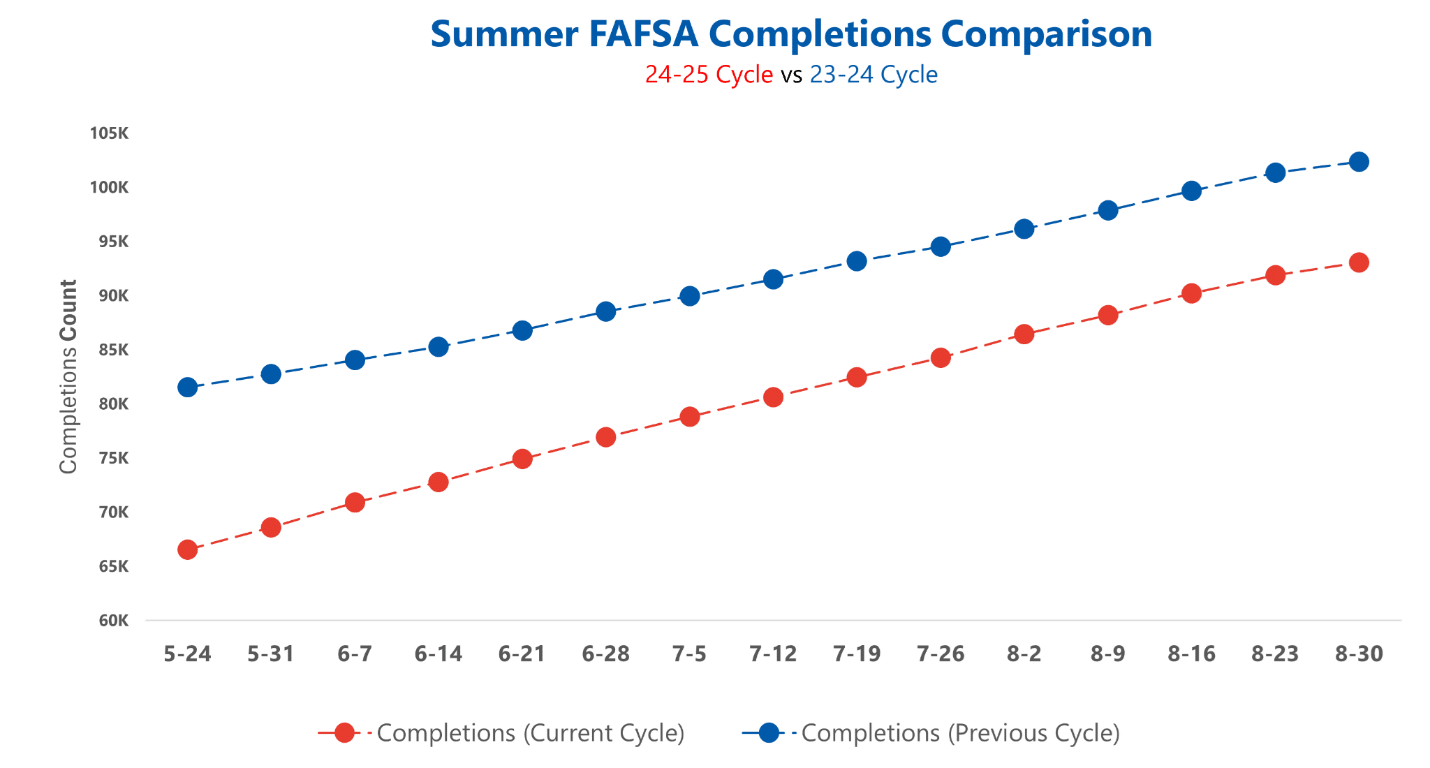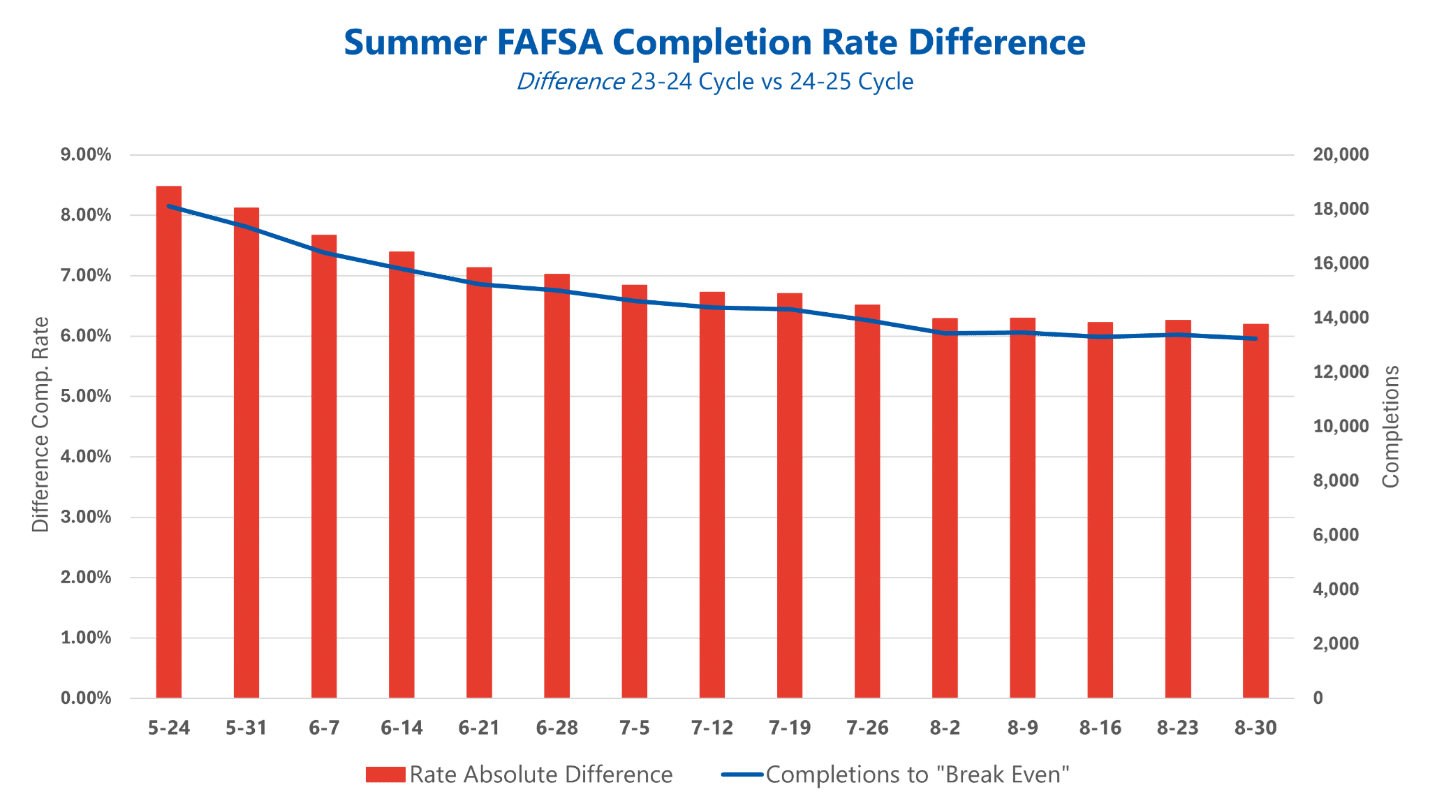The newly revised 24-25 cycle FAFSA was released as a “soft launch”, or limited release, on December 30. The 3-month delay from a traditional October 1 launch, compounded with other technical difficulties, caused a nationwide drop in FAFSA completions as students and parents struggled to navigate the new form in a shortened time window.
Despite this, Florida students and education professionals responded with an incredible effort over the summer months to increase the state’s FAFSA completion rate by over 10 percentage points. FCAN’s evaluation of the 15 weeks between May 24 and August 30 – the last week of the high school academic year through the first month of the college Fall semester – reveals the diverse strategies implemented around the state by local college access networks led to improved FAFSA completion and widespread engagement.
As of August 30, the state sat at a 43.5% FAFSA completion rate, about 6 percentage points behind last cycle’s rate of 49.7%. To match the last cycle of the FAFSA completion count as of August 30th, Florida required over 9,000 more application completions. With nearly 8,000 more seniors enrolled this school year, the state would have required more than 13,000 additional FAFSA completions to close the gap. Regardless of these gaps, Florida made significant progress this summer.

During the 15-week period, Florida’s FAFSA completions increased by 26,500 submissions, compared to 20,800 over the same dates last year. This represents an increase in completions of 40% from May 24 to August 30 in contrast to the previous year’s relative growth of 26% over the same period.
Florida also exhibited a greater week-to-week growth rate this summer, as evidenced by the sharper red slope in the figure above. Average week-to-week FAFSA growth for the current 24-25 cycle’s summer months was 2.4%, trumping last year’s value of 1.6%.

When evaluating progress in rate –- total completions over total seniors – it’s clear that while a gap still exists, Florida students made massive strides over the 15-week period to narrow it. The current cycle’s completion rate increased by 12-percentage points (31.1% to 43.5%) from May 24 to August 30, slightly edging the 10-percentage point increase seen last cycle.

Taking a closer look at the FAFSA completion rate gap between the current and previous cycles, Florida started the summer with an 8-point gap between the rates and made 2 points worth of progress over the summer, closing the gap to around 6-points. This represents nearly 5,000 completions towards “breaking even”, matching or bettering the rate of last year’s cycle.
These numbers tell a story of resilience and dedication. They represent thousands of Florida students who are now better positioned to pursue their educational dreams, thanks to the collective efforts of local college access partners, funders, administrators, educators, students, and parents.
